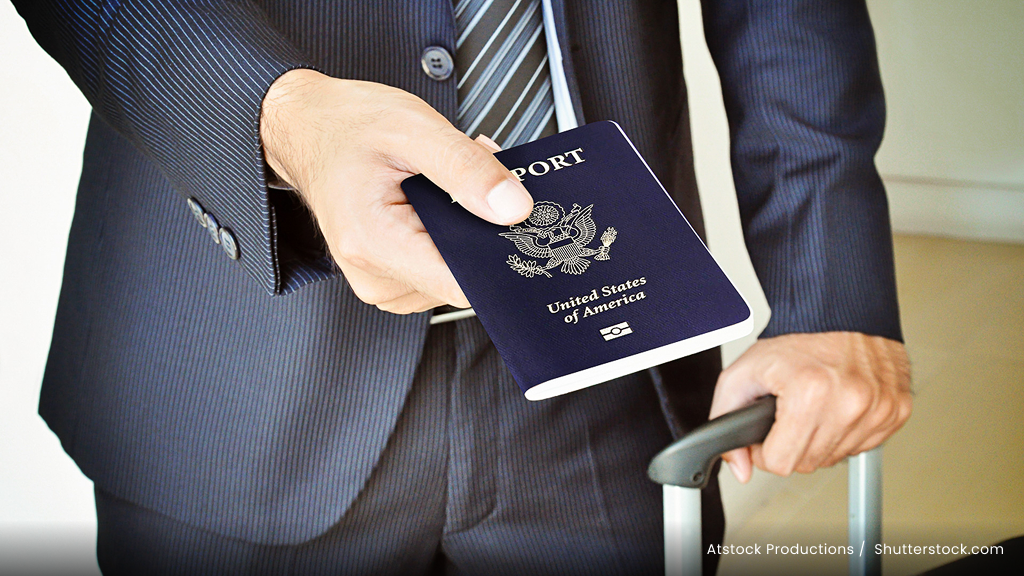How Do Travel Credit Cards Work?

Update: The information below was correct at the time of publishing, but one or more offers are no longer available. Please see issuer’s site for up-to-date information.
Travel credit cards are a great tool for turning your everyday spending into rewards. You can use the points or miles you earn toward flights, hotel stays and other travel, while enjoying benefits like travel-centric statement credits and insurance coverage.

400+ Credit Cards
Analyzed independently across 50+ data points in 30+ product categories

Reviewed
By a team of credit card experts with an average of 9+ years of experience

Trusted by
More than one million monthly readers seeking unbiased credit card guidance
CardCritics™ editorial team is dedicated to providing unbiased credit card reviews, advice and comprehensive comparisons. Our team of credit card experts uses rigorous data-driven methodologies to evaluate every card feature, fee structure and rewards program. In most instances, our experts are longtime members or holders of the very programs and cards they review, so they have firsthand experience maximizing them. We maintain complete editorial independence — our ratings and recommendations are never influenced by advertiser relationships or affiliate partnerships. You can learn more about our editorial standards, transparent review process and how we make money to understand how we help you make informed financial decisions.
These credit cards range from no-annual-fee starter cards to premium travel cards packaged with additional perks and protections. We’ll cover the different types of travel credit cards available, explore how travel credit cards work and highlight a few top options to consider.
Types of Travel Cards
Most travel credit cards fit into one of three distinct categories, each offering different ways to earn and redeem.
General Travel Cards
General travel credit cards earn flexible rewards not tied to a specific airline or hotel loyalty program. You typically earn points on travel-related purchases alongside everyday categories, such as dining, groceries or drugstore purchases, though some cards offer flat-rate rewards on spending, like 2x points on all purchases.
Travel credit cards come with a range of annual fees. Higher-fee cards may feature more premium perks, like airport lounge access or statement credits toward expedited airport security programs.
Airline Credit Cards
Airline credit cards are co-branded with a particular carrier and earn bonus miles on purchases with the airline, potentially alongside other rewards categories. These cards usually offer additional perks related to flying, like free checked bags, priority boarding and in-flight discounts.
Co-branded airline credit cards may also offer a faster path to elite status, which can help frequent flyers graduate to a higher tier of their airline loyalty program with greater perks. You can find credit cards co-branded with popular domestic airlines such as Delta, American Airlines, United and JetBlue.
Hotel Credit Cards
Hotel credit cards work similarly to airline cards but are tied to specific hotel chains. These co-branded travel cards earn the hotel loyalty program’s points, which can be redeemed for things like free nights or room upgrades.
Many hotel credit cards come with automatic elite status, which comes with added perks during your stay. Hotel chains like Hilton, Marriott, IHG and Hyatt offer a range of co-branded cards.
What’s Covered vs. What’s Not Covered
If you’re using a travel credit card, you might assume that every travel-related purchase earns rewards, but that’s not always the case. Whether a purchase counts as travel often comes down to how the merchant is categorized.
Credit card issuers use four-digit merchant category codes (MCCs) to classify businesses based on the services they provide. Purchases like airfare, hotel stays and car rentals are some of the most common qualifying expenses, but depending on the issuer, more niche purchases like parking garages and campgrounds may or may not qualify.
What’s typically covered:
- Flights and hotel stays
- Car rentals and cruises
- Taxis, ferries, buses and trains
- Travel agencies
What may not be covered:
- In-flight services
- Parking lots
- Boat rentals
- Campgrounds
- Timeshare rentals
- Gas stations
How Do Travel Rewards Work?
When you make eligible purchases with a travel credit card, you earn points or miles. The value of those rewards depends on how you redeem them, and redemption options vary by card.
Redeeming Through an Issuer Portal
Most travel credit card issuers feature an online portal where you can redeem points or miles to book flights, hotels, car rentals and other excursions. This is typically the most straightforward redemption avenue if you’re interested in turning your rewards into additional travel opportunities.
Some cards offer heightened rewards value for travel redemptions made through the issuer portal. I use the Chase Sapphire Preferred® Card to receive 25% more value from my Chase Ultimate Rewards® points by booking flights through Chase Travel℠. As a result, my recent 30,000-point round-trip flight was worth $375 through the portal, a bonus value of $75.
Transferring Points
If you’re a seasoned traveler, you may want to transfer your rewards to an issuer’s airline or hotel partners. Transfer partners can be especially valuable for maximizing redemptions, often boosting the value of your points.
Cards that earn American Express Membership Rewards® points, such as the American Express Platinum Card®, (a CardCritics™ advertiser) offer access to over a dozen different transfer partners, including Delta SkyMiles, JetBlue TrueBlue and Hilton Honors, meaning you have a variety of options when it comes time to book.
Most transfers are at a 1:1 ratio, but a few partners can offer more or less value. For example, 250 Amex Membership Rewards points translates to 200 TrueBlue points, while 1,000 Membership Rewards points becomes 2,000 Hilton Honors points.
Other Options
Your issuer may also have options to redeem rewards for cash back, statement credits, gift cards or merchandise. For example, if you have the Capital One Venture X Rewards Credit Card, you can use your Capital One miles to offset travel purchases made within the last 90 days, as well as for cash back and gift cards (at a lower rate).
And with the Citi Strata Premier® Card, you can redeem Citi ThankYou points for cash back (statement credit, direct deposit or check), gift cards and charity donations, or pay with points at select merchants.
Best Credit Cards That Offer Travel Rewards
The best travel credit cards come in a few shapes and sizes, featuring competitive rewards categories, travel-related benefits and redemption options that match your needs. Here are five top options to consider:
- Citi Strata Premier Card: This card earns 10x points on hotels, car rentals and attractions booked through Citi Travel, but you can earn 3x points on everyday categories like supermarkets, gas and EV charging, and restaurants. The card carries a reasonable $95 annual fee but comes with an annual Citi Travel hotel benefit that can recoup the yearly cost.
- Chase Sapphire Reserve®: You’ll earn up to 8x points on travel with the opportunity to earn a huge welcome bonus. This card charges a hefty $795 annual fee but includes airport lounge access, annual statement credits for travel and dining, extensive travel insurance protections, and more.
- Amex Platinum: The $895-annual-fee Amex Platinum earns up to 5x points on travel and features over $3,500 in benefits value, with a wealth of credits related to travel, dining and entertainment. Its comprehensive airport lounge network makes it one of the best cards for airport lounge access, and you can enjoy additional perks like hotel elite status and ample travel insurance coverage.
- Wells Fargo Autograph Journey℠ Card: You’ll earn up to 5x points on a variety of travel categories for a $95 annual fee, plus perks like an annual statement credit toward airline purchases and cell phone insurance (subject to a $25 deductible). If you’re most interested in transfer partner travel, note this card has a smaller roster of airline and hotel partners.
- Discover it® Miles: This no-annual-fee travel card is great for beginners looking to earn a flat rate of rewards on every purchase. You’ll earn 1.5x miles wherever you spend and enjoy an introductory bonus that matches all the miles you earn in your first year.
The information related to the Chase Sapphire Reserve® was collected by CardCritics™ and has not been reviewed or provided by the issuer of this product/card. Product details may vary. Please see issuer website for current information. CardCritics™ does not receive a commission for this product.
Frequently Asked Questions About Travel Credit Cards
What is a travel credit card?
A travel credit card earns points or miles, which you can redeem for flights, hotel stays, car rentals or other travel. Some come with travel perks such as free checked bags or automatic elite status.
Is it worth getting a travel credit card?
Even if you travel just a few times a year, a travel credit card can be well worth it. Cards with annual fees usually have higher rewards potential and access to more premium perks, like annual credits and lounge access. No-annual-fee travel cards exist, though, and are a great option for those who won’t want to worry about offsetting the yearly cost.
How do I use credit card points for travel?
Depending on the card, you can redeem points through a credit card issuer’s travel portal or transfer them to the issuer’s airline or hotel partners. Co-branded airline and hotel credit cards earn rewards that are a little more restrictive, offering redemptions through a specific airline or hotel loyalty program.











